Prices

December 22, 2021
Raw Materials Prices: Iron Ore, Coking Coal, Pig Iron, Scrap, Zinc
Written by Brett Linton
Steel Market Update is pleased to share this Premium content with Executive members. For information on upgrading to a Premium-level subscription, email Info@SteelMarketUpdate.com.
Prices for three of the seven steelmaking raw materials tracked in this SMU analysis increased over the last 30 days, while three products decreased and one was unchanged. Through Dec. 21, iron ore prices rose 26% from one month prior, zinc prices increased 4%, and busheling scrap prices rose 2%. In that same time frame, aluminum prices fell 23%, coking coal prices decreased 7%, and pig iron prices declined 5%. Shredded scrap prices were flat versus November.
Table 1 summarizes the price changes of the seven materials considered in this analysis. It reports the percentage change from one month prior, three months prior, and one year prior for each material.
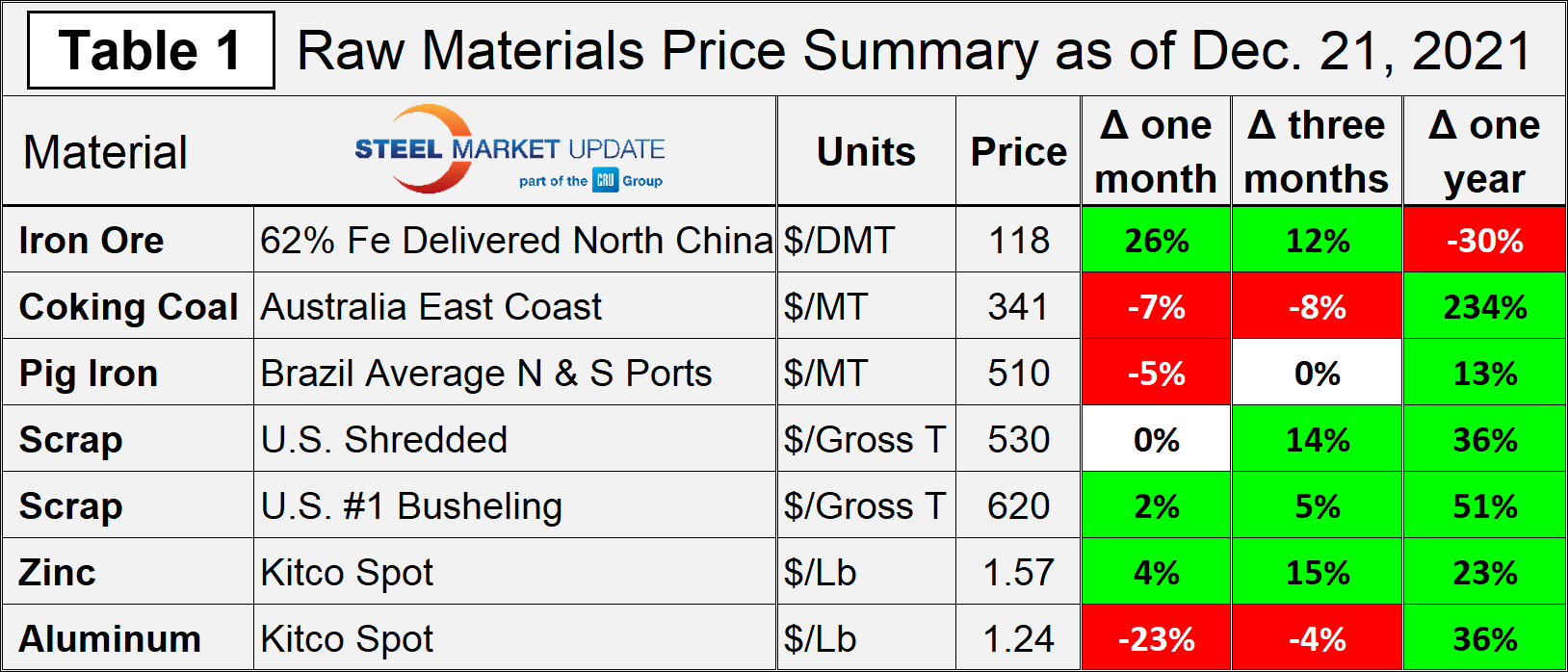
Iron Ore
The Chinese import price of 62% Fe content iron ore fines reached record highs over the summer, but began to decline in late-July and reached an 18-month low in mid-November. Prices have since risen; Figure 1 shows the price of 62% Fe delivered North China at $118 per dry metric ton as of Dec. 21. Iron ore prices have rebounded 26% in the last 30 days, up 12% compared to three months ago, but down 30% from the price this time last year. A Dec. 21 article from CRU explains, “Iron ore prices have continued to rise in the past week, a typical year-end development observed in recent years. This is the time when steelmakers start building iron ore stocks in anticipation of restricted transportation of ore from ports to mills during China’s spring festival, which will start at end-January.”
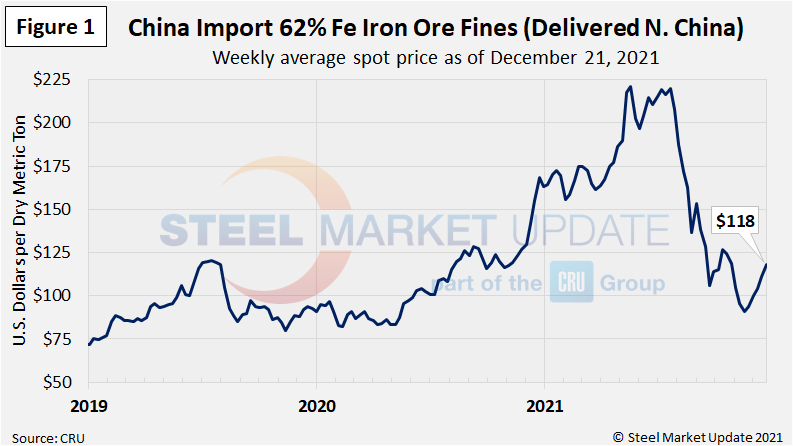
Coking Coal
The price of premium low volatile coking coal FOB east coast of Australia remains elevated, having reached a multi-year high of $405/dmt in late-September, now at $341/dmt as of Dec. 21 (Figure 2). Prices have declined 7% in the last 30 days, down 8% compared to three months prior, yet up a whopping 234% from prices one year ago. Prior to the previous three months, the last time coking coal prices were this high was over 13 years ago, in July 2008.
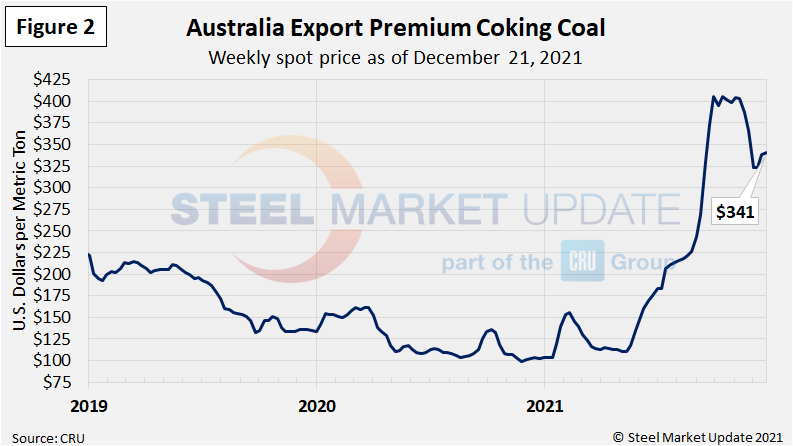
Pig Iron
Most of the pig iron imported to the U.S. currently comes from Russia, Ukraine and Brazil. This report summarizes prices out of Brazil and averages the FOB value from the north and south ports. The latest data shows pig iron prices continue to decline from the summer peak, now averaging $510 per metric ton in December. Although down compared to recent months, pig iron prices have remained historically high for over a year and are up 13% from levels this time last year. Recall that pig iron prices had reached a multi-year low of $275 per metric ton in May 2020, with prices increasing each month thereafter through January 2021 (Figure 3).
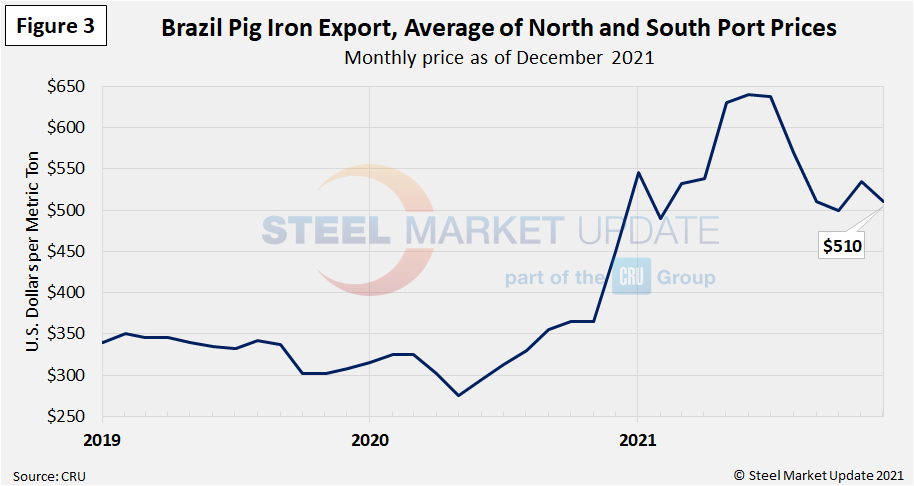
Scrap
Hot rolled steel prices fluctuate up and down with the price the mills must pay for their raw materials. Changes in the relationship between scrap and iron ore prices offer insights into the competitiveness of integrated mills, whose primary feedstock is iron ore, versus the minimills, whose primary feedstock is scrap. Figure 4 shows the spread between shredded and busheling scrap, priced in dollars per gross ton in the Great Lakes region. December scrap prices remain at or near historical highs, up 36-51% compared to prices one year ago. December shredded scrap prices were flat from November at $530 per gross ton, the highest level seen in our 15-year price history. Busheling scrap prices rose 2% over November to $620 per gross ton. Prior to 2021, the previous record for scrap prices over the last decade was $510 per ton for busheling in December 2011, and $473 per ton for shredded in February 2012.
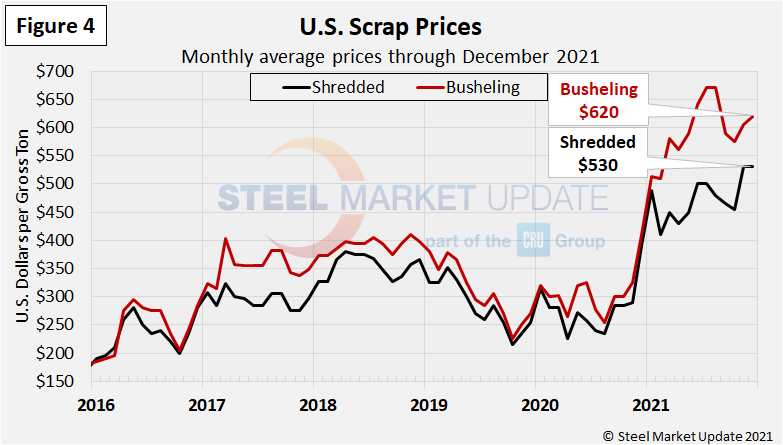
Figure 5 shows the prices of mill raw materials over the past four years. Iron ore prices are down 47% from the May 2021 peak of $221 per dry metric ton, while shredded scrap prices remain at a record-high.
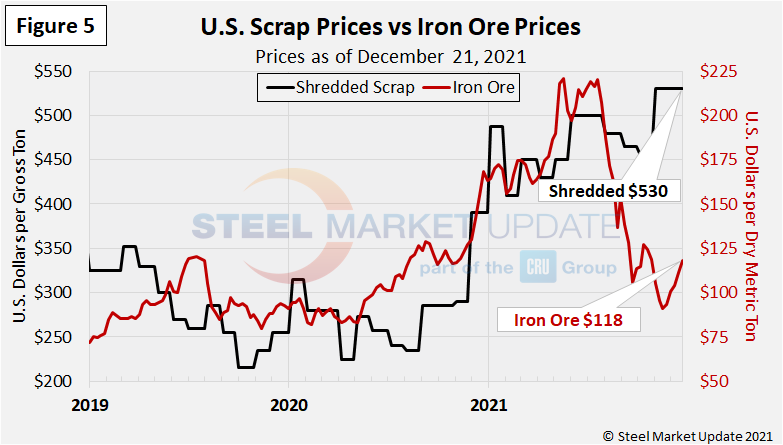
To compare the two, Steel Market Update divides the shredded scrap price by the iron ore price to calculate a ratio (Figure 6). A high ratio favors the integrated/BF producers, a lower ratio favors the minimill/EAF producers. At the current 4.50 ratio shown below, the cost advantage formerly held by minimills has faded, having surpassed the black four-year average ratio line back in late-August. In mid-November, we saw a ratio of 5.84, the highest seen since mid-2018. The scrap to iron ore ratio reached a record-low of 1.86 in August 2020 (within SMU’s limited 12-year data history).
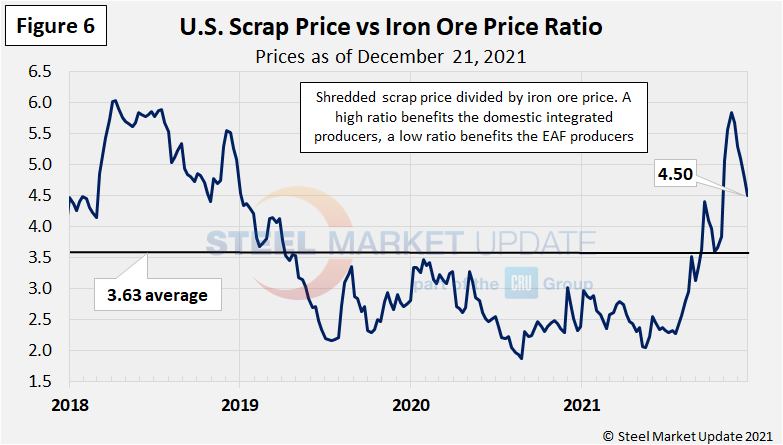
Figure 7 shows how the price of hot rolled steel generally tracks with the price of busheling scrap. Bush has risen $15 per gross ton over the past month, down $50 from the July/August peak, and up $210 from one year ago. The SMU hot rolled price average declined last week for the 11th consecutive week, with the Dec. 21 average down $70 week over week to $1,600 per ton; this is down $180 from the prior month, and down $355 from the early-September peak, but still up $615 over one year ago.
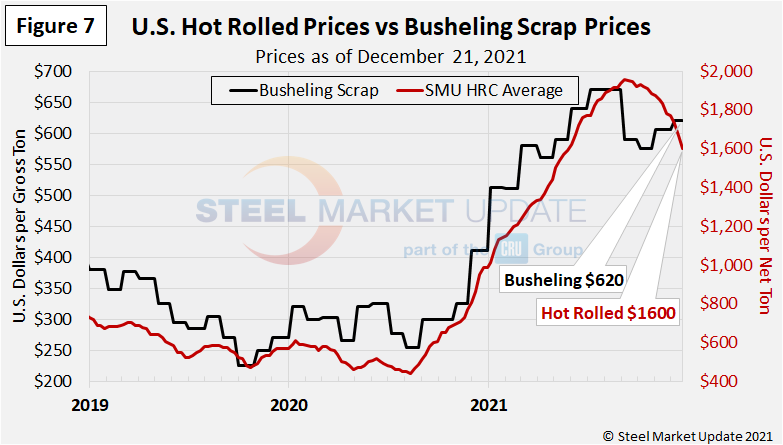
Zinc and Aluminum
Zinc, used to make galvanized and other products, reached a multi-year high of $1.7369 per pound in October (Figure 8). The LME cash price for zinc has since declined, reaching $1.5729 per pound as of Dec. 21, up 15% from three months prior, and up 23% from the same time last year. The price of zinc factors into the coating extras charged by the mills for galvanized products, many of which have been recently adjusted (more on that subject here).
Aluminum prices, which factor into the price of Galvalume, have been trending upwards since May 2020. Aluminum prices also reached a record high of $1.4399 per pound in mid-October, the highest daily price seen in our 10-year history (note that aluminum prices often have large swings and return to typical levels within a few days, as seen in the graphic below; we do not consider those surges in our overall high/low comparisons). Like zinc, the latest LME cash price of aluminum has declined since its peak, now at $1.2418 per pound as of Dec. 21, down 4% compared to three months ago, but up 36% from one year prior.
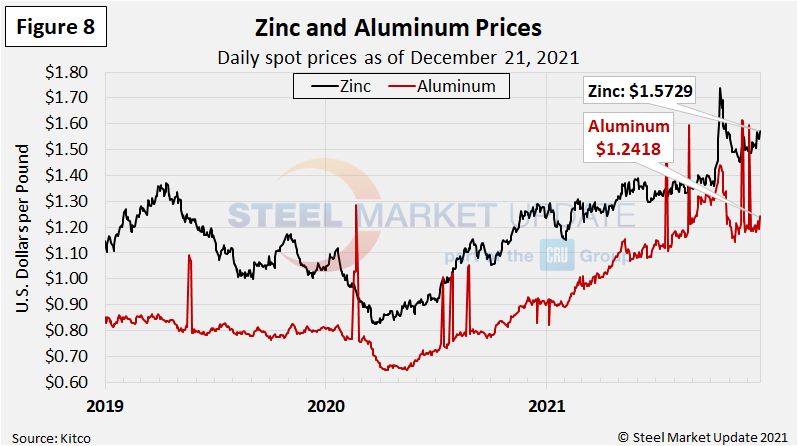
By Brett Linton, Brett@SteelMarketUpdate.com







